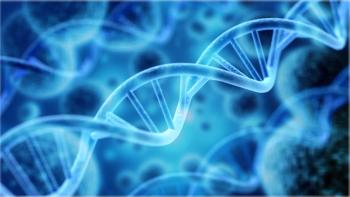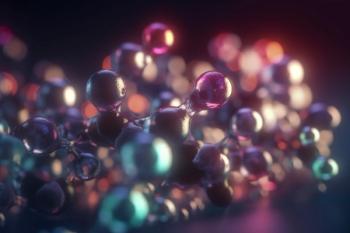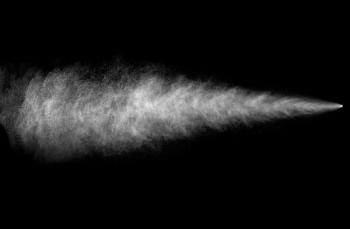
At HPLC 2023, Paola Dugo held a lecture on how combining two-dimensional liquid chromatography (LC×LC) with mass spectrometry (MS) can help scientists analyze food samples.

Researchers have introduced MCnebula, a new framework for untargeted LC–MS/MS data analysis. MCnebula focuses on critical chemical classes and utilizes visualization techniques to streamline the analysis process, enabling efficient pathway analysis, biomarker discovery, and classification of unknown compounds beyond the limits of spectral libraries.

At HPLC 2023, Paola Dugo held a lecture on how combining two-dimensional liquid chromatography (LC×LC) with mass spectrometry (MS) can help scientists analyze food samples.

At HPLC 2023, Erin Baker held a lecture on how using liquid chromatography and mass spectrometry together can help scientists further understand diseases that can arise from chemical exposure.

Webinar Date/Time: Day One: Monday, August 7th, 2023 9am EDT | 6am PDT | 2pm BST | 3pm CEST Day Two: Tuesday, August 8th, 2023 9am EDT | 6am PDT | 2pm BST | 3pm CEST

In his plenary lecture at HPLC 2023, Michal Holčapek presented his team's findings on how chromatography can help scientists record the human lipodome and better our understanding of diseases.

Gunda Köllensperger spoke at HPLC 2023 about how using U13C-isotopically labelled biomass extracts can change how scientists approach metabolomics.

In this HPLC 2023 keynote lecture, Mario Thevis discusses how chromatographic–mass spectrometric approaches have led to important advancements in sports drug testing programmes.

At HPLC 2023, Hyukju Kwon hosted a lecture on the roles LC–MS and artificial intelligence can have in autonomous material discovery.

At HPLC 2023, Valerie Gabelica of the Institut Européen de Chimie et Biologie said much is still unknown about this approach to mass spectrometry.

At HPLC 2023, Oliver Fiehn of the University of California explained results gathered from a device that can be used during daily digestion.

An ultrahigh-pressure liquid chromatography–tandem mass spectrometry method (UHPLC–MS/MS) using polarity switching, preceded by solid-phase extraction (SPE), was used to quantify eight ultraviolet filter (UVF) compounds in chlorinated outdoor pools in Winnipeg.

Fresh garlic and aged garlic, both brown and black, were all analyzed for their bioactives, in an attempt to expand those compounds’ applications as food ingredients and dietary supplements.

A new study reveals that real-time library searching significantly improves the structural characterization of glycerophospholipids and sphingomyelins, offering enhanced selectivity and comprehensive analysis. By utilizing real-time identifications to trigger targeted MSn analyses, researchers gain deeper insights into these crucial lipid species.

Researchers have discovered diacylglycerols as potent biomarkers for the rapid diagnosis of breast cancer, using mass spectrometry imaging. This breakthrough study offers new possibilities for improved intraoperative assessment and personalized treatment strategies.

Scientists have developed a breakthrough MDLC–MS method for in-depth characterization of charge variants in therapeutic antibodies. The innovative approach enables the detection and evaluation of rare charge variants, facilitating improved safety and efficacy in antibody development.

Organic acids, flavonoids, iridoids, and saponins were among the compounds discovered, with significant α-glucosidase inhibitory behavior in vitro that was inconsistent with substance content level.

New research emphasize the importance of identifying metabolite interference in LC–MS targeted metabolomics analysis to ensure accurate results. The study highlights the need for thorough investigation and resolution of metabolite interferences for reliable metabolite measurement in targeted metabolomics.

Mixed-mode cationic exchange (MCX) sorptive tapes combined with direct infusion mass spectrometry enable selective extraction and rapid analysis of cationic compounds in complex samples, such as opioids in saliva.

Internal energy distributions of five classes of ion sources based on dielectric barrier discharge (DBD) were measured, with results suggesting that one particular type of DBD can minimize fragmentation of ions with labile bonds.

A research team has developed a fast and sensitive method using UHPLC–MS/MS to simultaneously detect the nematicide fluensulfone (FSF) and its two major metabolites in different agricultural soils, providing valuable insights into the environmental behavior of FSF in soil systems.

A simultaneous, single-run analysis was sought for metabolites of the central carbon metabolism pathway, which is closely related to the occurrence and development of most diseases in humans.

New method enables comprehensive analysis of secondary formation markers in ambient organic aerosols, providing valuable insights into atmospheric pollutants using HPLC–ESI-TOF-MS.

The development of a newly-designed Girard's reagent, HBP, as charged isobaric mass tags has enabled selective capture and sensitive detection of aldehyde metabolites. The LC–dNLS-MS/MS screening approach using this reagent has successfully facilitated the discovery of natural aldehydes and their profiling in complex samples.

Researchers have developed an innovative strategy for compound annotation in offline 2D-LC–MS analysis. The approach combines hand-in-hand alignment with targeted molecular networking (TMN) and was successfully applied to analyze the chemical profile of Yupingfeng (YPF), a traditional Chinese medicine prescription, resulting in the identification of 497 compounds and demonstrating its efficiency and scalability in complex sample analysis.

Nails were evaluated for their suitability as non-invasive biomarkers for exposure to antibiotics, even those that are commonly prescribed.

A newly developed UHPLC–MS/MS method allows for the accurate analysis of bioactive compounds, including apigenin, apigenin 7-glucoside, and chlorogenic acid, in goat serum.